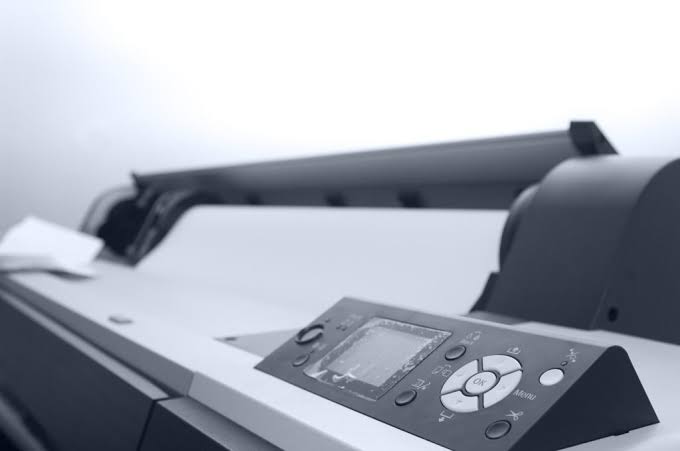High-quality wide format printers boast an array of advanced features designed to meet the demanding needs of professional printing environments. These sophisticated machines have evolved to offer unprecedented levels of precision, versatility, and efficiency. From improved color accuracy to enhanced media handling capabilities, modern wide format printers are pushing the boundaries of what’s possible in large-scale printing. Understanding these key features of high-quality wide format printers available can help businesses and creative professionals make informed decisions when investing in wide format printing technology.
For smaller-scale printing needs, cost-efficiency is just as important as performance. If you’re wondering what printer has the cheapest ink, exploring budget-friendly options with low-cost replacement cartridges can help reduce ongoing printing expenses without sacrificing quality.
Advanced Color Management Systems
Top-tier wide format printers incorporate sophisticated color management systems that ensure consistent, accurate color reproduction across various media types and print runs. These systems often include built-in spectrophotometers that can automatically calibrate the printer and create custom color profiles for different substrates. Some printers use expanded ink sets with light cyan, light magenta, and multiple black inks to achieve smoother gradients and a wider color gamut. Advanced color matching technologies allow printers to accurately reproduce brand colors and achieve Pantone certifications. Many high-end models also feature onboard color libraries and the ability to store custom color profiles, streamlining workflow for repeat jobs. For industries where color accuracy is critical, such as fashion design or fine art reproduction, these advanced color management features can make a significant difference in output quality.
Multi-Roll and Auto-Switching Capabilities
High-quality wide format printers often feature multi-roll capabilities and auto-switching functions that dramatically improve productivity. These printers can simultaneously load multiple rolls of media, allowing for quick transitions between different paper types or sizes without manual intervention. Auto-switching technology enables the printer to intelligently choose the appropriate roll based on the job specifications, reducing setup time and minimizing media waste. Some advanced models can even switch between rolls mid-job, enabling long print runs that exceed the length of a single roll. This feature is particularly valuable in high-volume production environments or print shops that handle a diverse range of job types. Multi-roll capabilities also allow for unattended operation, as the printer can continue working on queued jobs even after one roll is depleted.
Precision Media Handling and Feeding Systems
Superior media handling is a hallmark of high-quality wide format printers. These machines employ advanced feeding systems that ensure precise media alignment and consistent tension throughout the printing process. Some printers use optical sensors to detect media edges and automatically adjust print margins, reducing the risk of misprints. Vacuum platens help keep media flat during printing, which is crucial for achieving sharp, consistent output, especially on thinner substrates. Advanced models may feature automatic skew correction to compensate for imperfectly loaded rolls. For printers capable of handling rigid media, precision transport systems ensure accurate registration for double-sided printing or multi-pass jobs. These sophisticated media handling features not only improve print quality but also reduce waste and operator intervention, leading to more efficient workflows.
High-Speed, High-Resolution Print Heads
Cutting-edge wide format printers utilize advanced print head technology to deliver both high speed and high resolution. Many top-end models feature staggered print head arrays that can lay down multiple ink droplets simultaneously, significantly increasing print speeds without sacrificing quality. Variable droplet technology allows these printers to produce ultra-fine details and smooth gradients by adjusting the size of ink droplets on the fly. Some printers use piezoelectric print heads that offer longer lifespans and greater precision compared to thermal inkjet technology. Print resolutions of 2400 dpi or higher are not uncommon in high-end models, enabling the reproduction of intricate patterns and fine text even at large scales. The combination of speed and precision offered by these advanced print heads allows businesses to take on a wider range of jobs and meet tight deadlines without compromising on quality.
Intelligent Workflow and Connectivity Solutions
High-quality wide format printers come equipped with smart workflow features and robust connectivity options designed to streamline production processes. Many include onboard computers with large touchscreen interfaces for easy job management and printer control. Advanced job queuing and nesting software helps optimize media usage and production schedules. Some printers offer automated maintenance routines, including print head cleaning and alignment, to ensure consistent performance with minimal downtime. Cloud connectivity allows for remote job submission and printer monitoring, enabling more flexible work arrangements. Integration with popular design software and RIP (Raster Image Processor) solutions ensures smooth data transfer and accurate rendering of complex files. Some advanced models even incorporate artificial intelligence to predict maintenance needs and optimize print settings based on historical data. These intelligent features not only improve efficiency but also reduce the learning curve for operators, allowing print shops to maintain high productivity even with less experienced staff.






